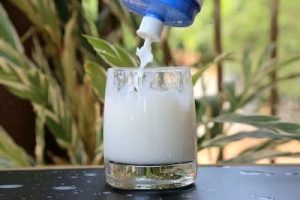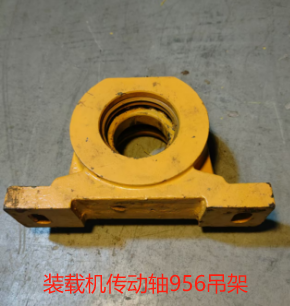Defoaming agents, also known as antifoaming agents, are food additives that reduce surface tension, inhibit foam generation or eliminate foam that has already been generated during food processing. Defoaming agents approved for use in my country include emulsified silicone oil, high-carbon alcohol fatty acid ester complex, polyoxyethylene polyoxypropylene pentaerythritol ether, polyoxyethylene polyoxypropylene amine ether, polyoxypropylene glyceryl ether and polyoxypropylene polyoxyethylene 7 types including vinyl glyceryl ether and polydimethylsiloxane.

Encyclopedia business card #
Defoamer is also called anti-foaming agent. During the industrial production process, many harmful foams will be produced, and defoamer needs to be added. It is widely used to remove harmful foam produced in the production process of latex, textile sizing, food fermentation, biomedicine, pesticides, coatings, petrochemicals, papermaking, industrial cleaning and other industries.
Foam #
Generally speaking, foam is a coarse dispersion of gas in a liquid and belongs to a gas-liquid heterogeneous system. A gas-liquid dispersion with a bulk density close to that of a gas but not a liquid. Gas-liquid dispersions are divided into “bubble dispersions” with more liquid and less gas, and “foams” with more gas and less liquid. As shown above.
What is a bubble? Foam can be defined as a stable gas in a liquid medium . Foam is a dispersion system of gas in liquid.
The body becomes many bubbles separated by a continuous phase of liquid, the gas is the dispersed phase, and the liquid is the dispersion medium.
Foam is a thermodynamically unstable system and cannot be stable. The thermodynamic instability of foam is due to the fact that the total surface area of the liquid in the system is greatly reduced after the bubble is broken, and thus the energy (free energy) of the system is greatly reduced.
The Marangoni effect prevents the drainage of the bubble film and restores the thickness of the bubble film. The bubble releases gas into the air and the bubble collapses. Factors affecting this process are the apparent viscosity and density of the bubbles, which affect the penetration and diffusion of defoaming agent particles on the bubble surface film.
develop #
Recent research on defoaming agents has mainly focused on compound defoaming such as the compounding of organosilicon compounds and surfactants, the compounding of polyethers and organosilicon, the compounding of water-soluble or oil-soluble polyethers and silicon-containing polyethers. In terms of agents, compounding is one of the development trends of defoaming agents. As far as current defoaming agents are concerned, polyether and silicone defoaming agents have the best performance, and research on the modification and development of new varieties of these two types of defoaming agents is also relatively active.
In order to eliminate the inevitable shortcomings of traditional defoaming agents, molecular-level defoaming agents have emerged. This type of defoaming agent is composed of special mineral oil and special molecular-level defoaming substances. The entire molecule is in the form of a network-like super The branched structure has multiple anchor points and has a certain self-emulsification effect. There is no need to add additional emulsifiers and there will be no shrinkage caused by the detachment of the emulsifier.
physical properties #
1. Fast defoaming and good foam suppression performance.
2. Does not affect the basic properties of the foaming system.
3. Good diffusion and permeability.
4. Chemically stable.
5. No physiological activity, no corrosion, no toxicity, no adverse side effects, non-flammable, non-explosive, and high safety.
use #
Mainly suitable for circuit board (PCB) process; chemical industry; electroplating; printing and dyeing; papermaking; medicine; water-based ink ; ceramic slitting; steel plate cleaning; processing of aluminum industry; various sewage treatment and various industries and other water systems. Bubbles and suppresses bubbles.
Oil industry #
Silicone oil defoaming agents are widely used in the petroleum industry and have become an indispensable and important additive in the production process. Since a large amount of strong foaming surfactants are used in drilling fluids, defoaming agents are not only indispensable for crude oil extraction, but also must be used in the post-processing of crude oil refining. First of all, silicone oil defoaming agent needs to be used in the crude oil distillation process. Secondly, the gas extracted from the top of the tower or the natural gas coming out of the gas well contains impurities such as H2S and CO2. When ethanolamine or (HOCHMeCH2) 2NH is used as the H2S absorption liquid circulation A large amount of foam will be generated during operation, which will affect normal production. If silicone oil defoamer is added to the amine liquid, high-efficiency continuous operation can be achieved.
During the separation of aromatic hydrocarbons (benzene, toluene, xylene, etc.) from crude oil fractions, more or less foam is generated during the cracking and hydrogenation reforming reactions. In the hydrocracking process, since water-diethylene glycol is used as the solvent, the latter has a strong tendency to foam, so defoaming agents are required for these processes. In addition, when producing various types of lubricants, due to the addition of floating oil agents, antioxidants, anti-rust agents, solid lubricants and extreme pressure anti-wear agents, etc., they are all surface-active substances and have varying degrees of effects. Foaming effect, so silicone oil defoaming agent needs to be added.
Textile industry #
The textile industry is one of the sectors that uses the largest amount of silicone oil for defoaming. Among the eight main processes of fabric processing (i.e. spinning, sizing, weaving, desizing, scouring, bleaching, dyeing (tie-dye) and finishing) , there are 4 processes (sizing, scouring, dyeing and finishing) that require the use of surfactants and other additives, so there are varying degrees of foam problems. For example, in the fabric printing and dyeing, leveling and bleaching processes, penetrants are often added to the dyeing of thick and dense fabrics to improve dyeing uniformity, but penetrants can easily foam and cause color stains and even waste products; for another example, When printing on nylon silk, it is also easy to produce “bubble edges” and affect product quality . If silicone oil emulsion defoaming agent is added separately or used together with octanol as defoaming agent, the problem of foam can be solved and the leveling effect and color paste stability can be improved. It should be pointed out that in the process of dyeing and finishing fiber fabrics, there are strict requirements on the quality of defoaming agents used. If the stability of the defoaming agent is not good, oil stains or oil spots may appear on the fabric, causing the product to be degraded or called a waste product. For this reason, the performance of the defoaming agent, bath solution formula, acidity, alkalinity, cleaning temperature and stirring conditions must be carefully selected. For general fabrics, silicone oil emulsion defoaming agents are often used; for high-temperature (above 130°C) dyeing of polyester fabrics, self-emulsifying modified silicone oil defoaming agents are often used.
Synthetic rubber and resin industry #
When using emulsion polymerization to prepare rubber latex, fatty acid soaps are often used as emulsifiers, which leads to serious foaming problems. Especially after the reaction is completed, the foaming is particularly serious when the unreacted monomer is recovered by stripping. For example, in the process of synthesizing styrene-butadiene latex, acrylonitrile-butadiene-styrene (ABS) copolymer, chloroprene copolymer and phenolic resin, there are varying degrees of foaming problems. Polyether silicone oil defoamer is used. Or silicone oil emulsion defoamer, which can solve the above problems satisfactorily. For another example, in the production process of polyvinyl chloride (PVC) flooring, etc., a layer of PVC sol film needs to be coated. To improve the surface wear resistance, there are dense bubbles in the PVC sol. If not eliminated, the transparency and appearance of the coating will be affected. When 0.2% ( mass fraction ) (based on PVC) modified silicone oil defoaming agent is added, the speed of vacuum degassing of the sol can be accelerated, the viscosity of the sol liquid can also be reduced, and the workability can be improved. The surface of the cured sol film is smooth and smooth. bubble.
Classification #
Defoaming agents are mostly liquid compound products, mainly divided into three categories: mineral oil, silicone, and polyether. Mineral oil defoaming agents are usually composed of carriers, active agents, etc. The carrier is a substance with low surface tension. Its function is to carry and dilute. Commonly used carriers are water, fatty alcohol, etc.; the function of the active agent is to suppress and eliminate foam. Commonly used carriers include wax, aliphatic amide, fat, etc. Silicone defoaming agents generally include polydimethylsiloxane, etc. Organic silicone defoaming agents have poor solubility and have the characteristics of fast defoaming speed and good foam suppression at normal temperature. However, at high temperatures, stratification occurs, the defoaming speed is slow, and the foam suppression is poor. Polyether defoaming agents include polyoxypropylene oxyethylene glyceryl ether, etc. Polyether defoaming agents have the characteristics of long foam suppression time, good effect, fast defoaming speed, and good thermal stability. For example, defoaming agents are used in the production processes of fruit and vegetable beverages, soy products, sucrose, etc.

 April 1, 2024
April 1, 2024 










